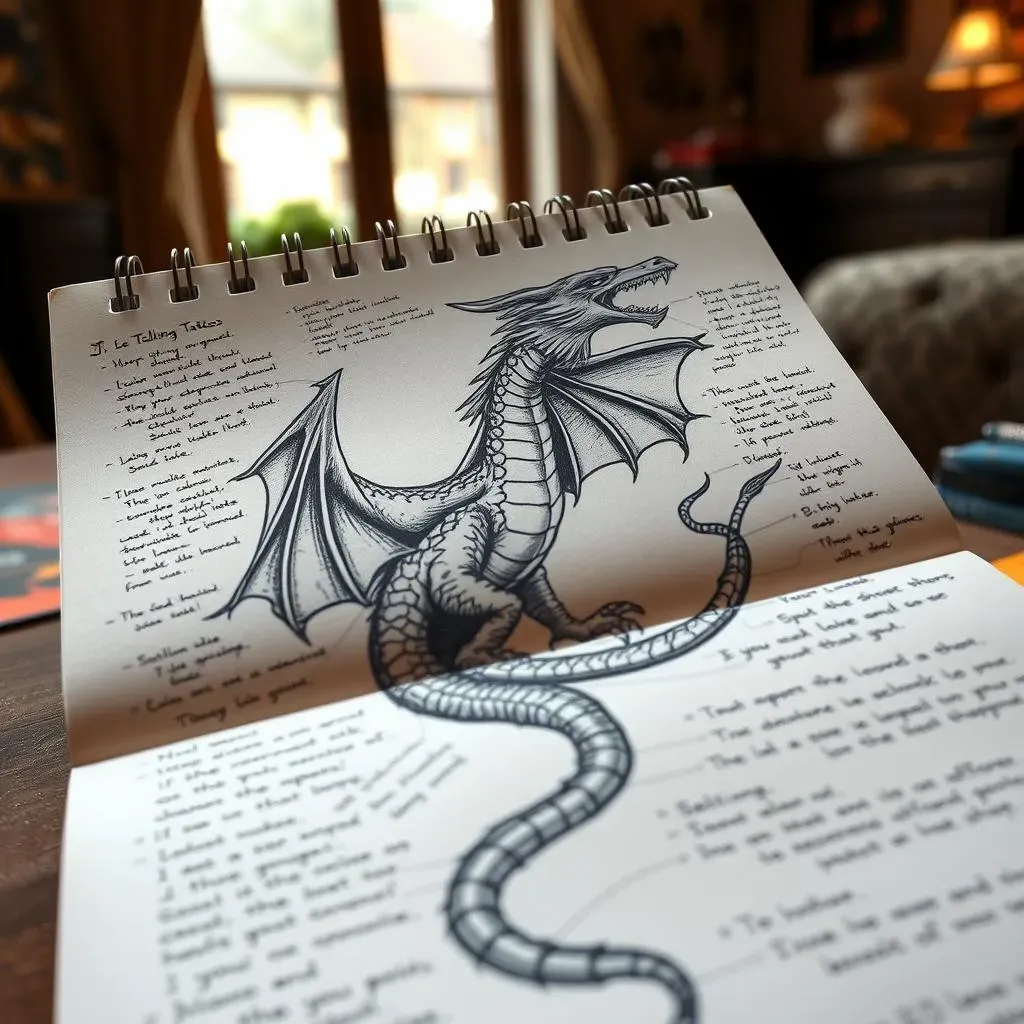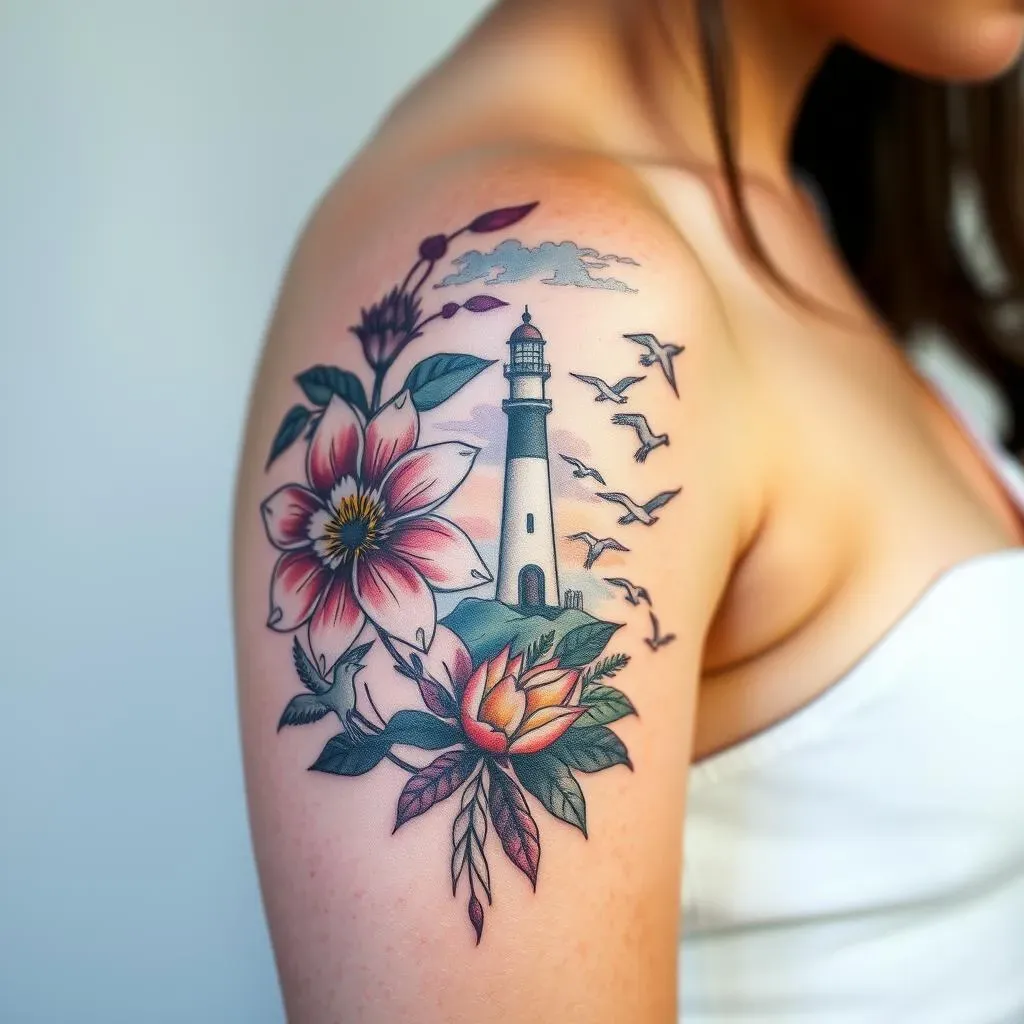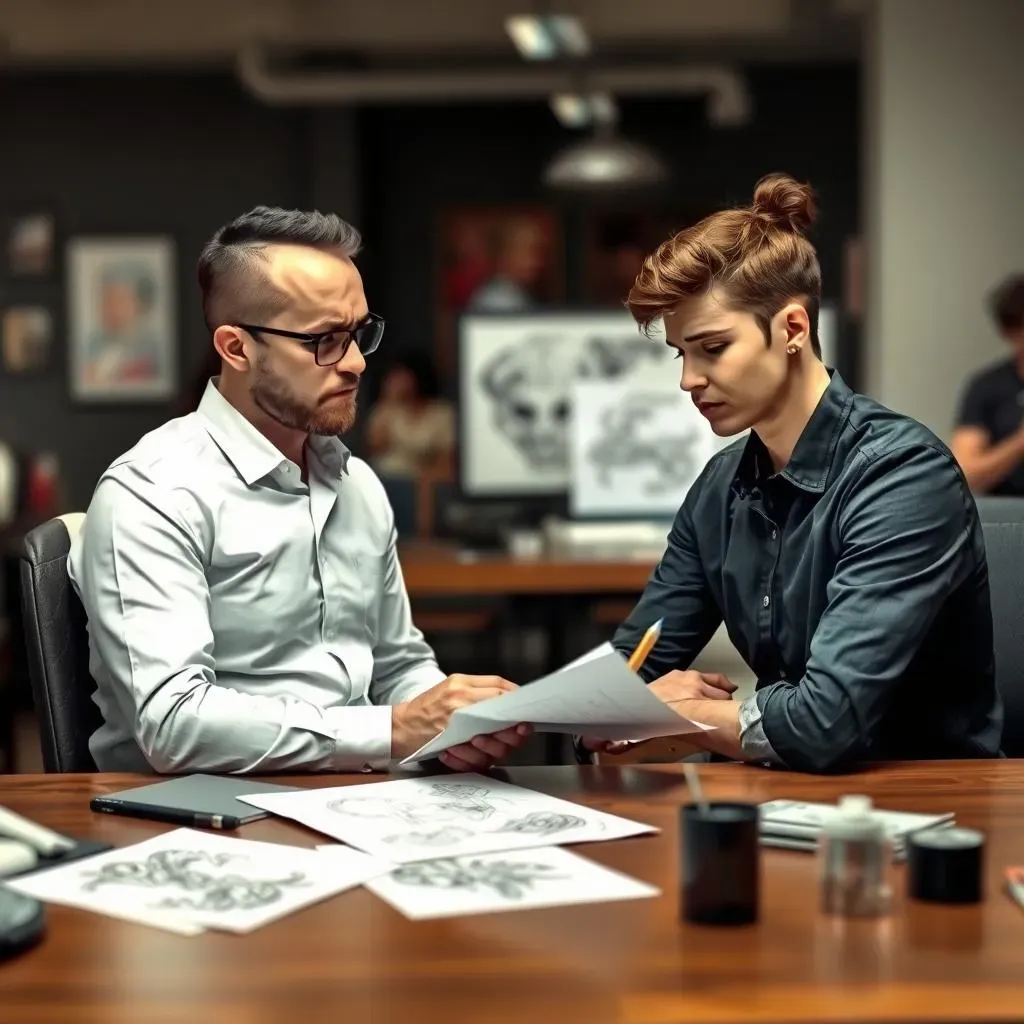Table of Contents
Ever had a killer tattoo idea in your head, but struggled to explain it? You're not alone. Turning that mental image into a real piece of art on your skin requires more than just pointing and grunting. It's about using the right words and knowing what details matter. This is where "how to describe a tattoo design" becomes essential. Think of it like ordering a complicated coffee; you can't just say "coffee," you gotta specify the size, the milk, the syrup, everything. This article will help you speak the language of tattoo artists, so you can get the exact design you've always wanted. We'll break down the key elements to focus on, from style and size to specific imagery. We'll also cover what to avoid so your vision doesn't get lost in translation. Ready to get inked with confidence? Let's jump in.
Talking Tattoo: Describing Your Vision
Talking Tattoo: Describing Your Vision
so you've got this awesome tattoo idea swirling around in your head, right? It's like a movie playing on repeat, but how do you get that vision onto paper, or more importantly, onto skin? That's where we start talking about "Talking Tattoo: Describing Your Vision." It's not just about saying "I want a dragon." It's about painting a picture with words. Think about the dragon's pose, its expression, the style of the scales. Is it a fierce, fire-breathing beast, or a more serene, mythical creature? The more details you can communicate, the better your artist will understand what you're going for. It's like giving them a blueprint instead of a vague idea. So, before you even step into a studio, spend some time really fleshing out your vision. What makes it unique? What feeling do you want it to evoke? This first step is all about getting crystal clear on your design.
How to Describe a Tattoo Design: Key Elements
How to Describe a Tattoo Design: Key Elements
Style: The Foundation
so you've got your basic idea, now let's talk style. This is like choosing the genre of your movie. Are you thinking traditional, with bold lines and classic imagery? Maybe you're leaning towards realism, where it looks like a photograph on your skin? Or perhaps watercolor, with its soft, flowing look? Each style has a different feel, and it's crucial to nail this down early. Knowing your style helps your artist understand the techniques they need to use and the overall vibe you're aiming for. Think about the tattoos you admire, and see if you can identify what styles they fall into. It's not just about what it is, but how it is.
Don't be afraid to mix styles if that's what you're into. A neo-traditional piece might incorporate elements of realism or even geometric patterns. The key is to communicate your vision clearly to your artist, so they can bring it to life. If you aren't sure what style you like, do some research! Check out different tattoo artists online, and look at their portfolios. You will probably find something that catches your eye. This is your chance to get creative and make sure your tattoo is truly one of a kind.
Style | Description | Characteristics |
|---|---|---|
Traditional | Bold lines, classic imagery | Thick outlines, limited color palette |
Realism | Looks like a photograph | Fine details, shading, depth |
Watercolor | Soft, flowing, painterly | No hard outlines, blending of colors |
Imagery: The Heart of the Matter
Now, let's get into the nitty-gritty: the actual images you want in your tattoo. This is where being specific really pays off. Instead of just saying "a flower," think about what kind of flower. A rose? A lotus? A sunflower? Each carries a different meaning and has its own unique look. Then, consider its size, its position, and how it interacts with other elements in your design. Are there any other images or symbols you want to include? How do they relate to each other? The more detail you provide, the easier it is for your artist to create a cohesive design.
Think about the story you want your tattoo to tell. Each image can act like a word in a sentence, and how you arrange them creates the narrative. For example, a lighthouse battling a storm might represent resilience, while a flock of birds taking flight could symbolize freedom. It's not just about pretty pictures; it's about communicating meaning through visual art. Don't be shy about using metaphors or analogies to help your artist understand the feeling you're aiming for. It's your skin, after all, so make it count!
Avoiding Tattoo Design Missteps: What Not to Do
Avoiding Tattoo Design Missteps: What Not to Do
Don't Be Vague: Specificity is Your Friend
so you've got the creative juices flowing, but let's talk about what not to do. One of the biggest pitfalls is being too vague. Saying you want "something cool" is like asking for a surprise birthday present you're going to hate. Your artist is not a mind reader. They need details, specifics, and clear instructions. Vague requests lead to misinterpretations and ultimately a tattoo you may not be happy with. Instead of saying "a bird," say "a sparrow in flight, with its wings angled downwards, and a small twig in its beak." See the difference? The more specific you are, the better your chances of getting the tattoo you envisioned.
Remember, your tattoo is a collaboration between you and your artist. They bring their skills and expertise, but you bring the vision. If your vision is foggy, the final product is likely to be as well. So, take the time to really think through what you want. Don't rush the process. It’s better to have a detailed plan than to end up with a tattoo you don’t love. It's like ordering food; would you just say "give me something"? No, you specify what you want to get what you're craving.
Ignoring Placement: It Matters More Than You Think
Another common mistake is not thinking about placement. Where you put your tattoo is just as important as what it is. A tiny, intricate design might get lost on your back, while a large, bold piece might not work well on your wrist. Consider how the tattoo will flow with the shape of your body, and how it will look when you move. Think about your lifestyle too. If you work in a conservative environment, a large tattoo on your hand might not be the best idea. It’s like decorating your house; you wouldn’t put a giant sofa in a tiny room, right? Placement is about finding the perfect spot for your art to shine.
Also, think about the future. Will you want to add more tattoos later? If so, how will this one fit into the overall picture? It's like planning a garden; you need to think about how the different plants will look together. Don't just pick a spot at random. Take the time to consider all the possibilities. Your tattoo is going to be with you for a long time, so make sure you choose a location that you'll be happy with for years to come. Don't underestimate the importance of placement; it can make or break your tattoo.
Mistake | Why It's a Problem | How to Avoid It |
|---|---|---|
Being Vague | Leads to misinterpretations and a tattoo you may not like. | Be specific with details, use descriptive language, and provide references. |
Ignoring Placement | Can make your tattoo look awkward or get lost. | Consider body shape, lifestyle, and how the tattoo will look in motion. |
Wrapping it Up: Your Tattoo, Your Words
Describing a tattoo design doesn't have to feel like a game of charades. By focusing on the key elements, using clear language, and understanding what your artist needs, you can turn your vision into reality. Remember, it's a collaborative process, and good communication is the key to getting a tattoo you'll love for years to come. So go forth, brainstorm, and don't be afraid to get specific. Your dream tattoo is just a well-described conversation away.